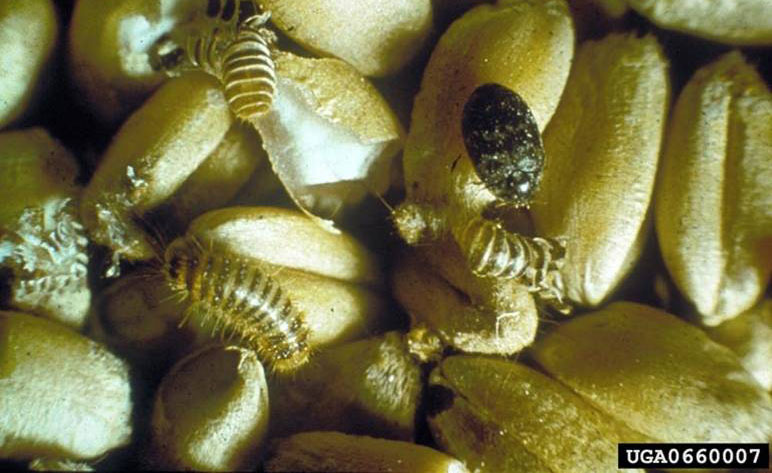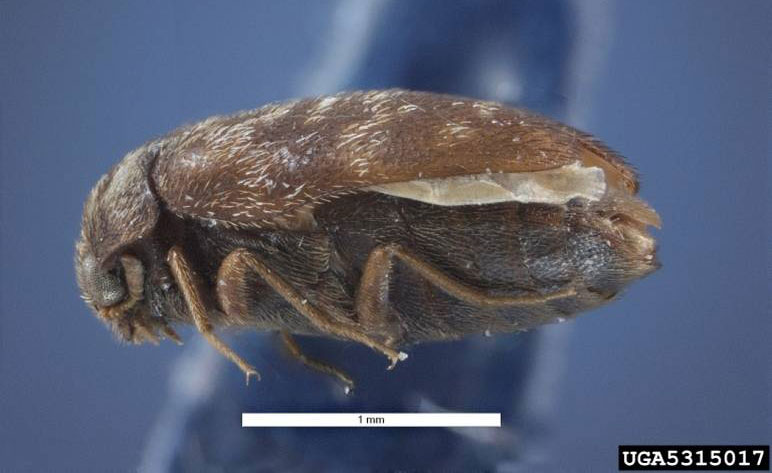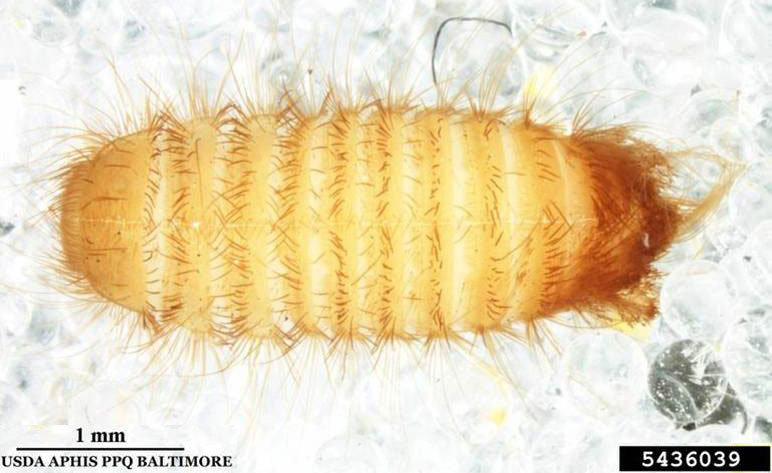The khapra beetle is one of the most destructive pests of stored grain and grain products. Because of this, it is regulated as a quarantine pest in many countries, including Canada.
All imports are subject to inspection upon entering Canada. Any shipments found to have pests are destroyed or returned to their point of origin. If an importer wants to export rice to the United States from Canada, it is recommended they have a phytosanitary certificate from the country of origin stating their shipment is free of khapra beetle. This applies to rice imported into Canada from any country known to have khapra beetle.
Currently, the khapra beetle is not established in Canada. However, if it were introduced, it could have severe adverse effects on our grain and oilseed industries, which are worth billions of dollars.
The khapra beetle is resistant to most insecticides. The larvae are voracious eaters of grains, grain products, and seeds. They destroy valuable commodities by feeding on grains and seeds, often leaving only the husk behind. Larvae contaminate products by shedding their cast-off skins and hair, while also leaving behind excrement and urine. An infestation lowers product quality and affects the possibility of exportation.
Plant pest card - Khapra beetle
Distribution
The khapra beetle is native to India but has become established in many tropical and subtropical countries. It has also been reported in many countries throughout Africa, Asia, and parts of Europe and South America. In North America, this beetle was detected in a few US states but was eradicated. Although the khapra beetle is not established in Canada, several have been intercepted on imported products at Canada's borders.
Spread
Adult khapra beetles have functional wings, but are not known to fly. These beetles are primarily spread by the transportation of infested materials such as bagged cereals, grains or seeds. The larvae will feed on dried stored products from plants (such as rice) or animal products (such as dried animal remains), but prefer grain and cereal products.
Adults and larvae are known to seek out cracks and crevices in burlap bags/sacks, crates, rail cars, ship holds and trucks, where they can remain hidden for years. International trade and travel has substantially contributed to the spread of this pest.
Life cycle
The life span of an adult khapra beetle is five to ten days. Larval development usually takes between four to six weeks, but can continue for up to seven years in adverse conditions. In optimal conditions, khapra beetles lay between 50 to 100 eggs in a year, which can create up to 10 generations of beetles in one year.
Adult
An adult khapra beetle is approximately 1.6 to 3.0 mm long by 0.9 to 1.7 mm wide and is covered with hair. Males are brown to black with indistinct reddish brown markings on their wings. Females are slightly larger than males and lighter in color.
Larvae
When hatched, khapra beetle larvae are approximately 1.6 to 1.88 mm long. Larvae are yellowish white, with brown hairs covering the head and body. As they grow, the larvae's colour changes to a golden or reddish brown and they become hairier.
Health concerns
Larval skins cast by the beetles may cause skin irritation in people handling heavily infested grains. In rare cases, if swallowed, the barbed hairs of the larvae may be a serious health hazard and can cause gastrointestinal irritation.
Photos
Figure 1 - Common khapra beetle
Common khapra beetle on common wheat
Photo courtesy - Ministry of Agriculture and Regional Development Archive, Ministry of Agriculture and Regional Development, Bugwood.org




